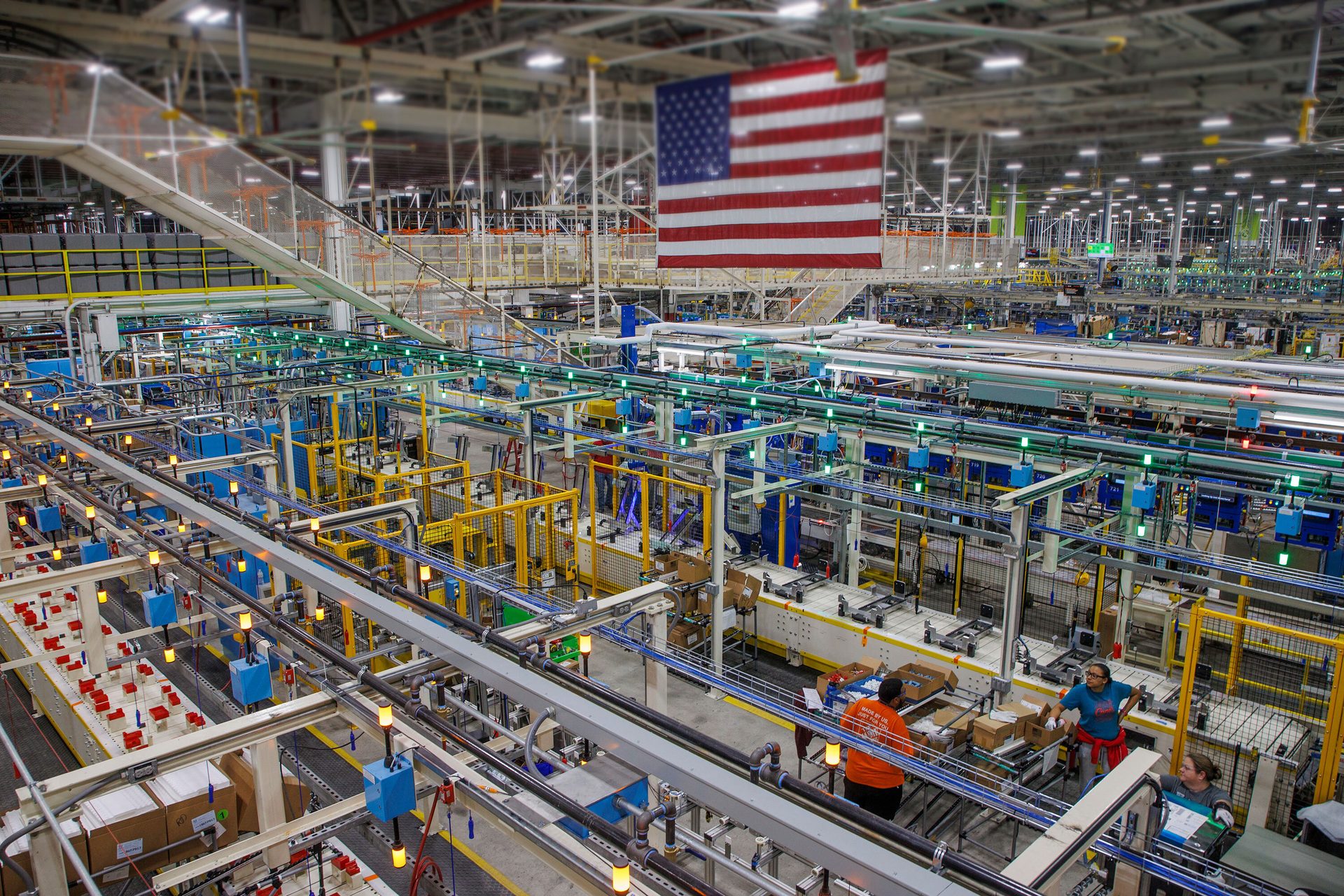MEDICAL REVIEW

CONTACT
Austin

Lightweight battery-powered aircraft are ready for take-off.
Design Firm Helps Drugmaker Improve Ergonomics of Injector Pen
Phil Anthony, P.E // President // Design Integrity Inc. // Chicago, Il
This auto-injector pen was developed to be easy to use and to reduce the burden on patients when performing self-injection. Photo courtesy AbbVie Inc.
MEDICAL PRODUCTS
Designing a medical device is more complicated than designing a toaster or an automotive cooling system. Besides the issues common to any product—feasibility, usability, and design for manufacture and assembly—there are also issues of biocompatibility, sterilization and FDA regulations to deal with.
It’s enough to overwhelm even experienced engineers. That’s why some manufacturers turn to outside design firms for help. Such firms aren’t merely for inventors who need help with an idea hastily sketched on a cocktail napkin. In fact, even major manufacturers occasionally seek help from design firms, even if it’s just to get a fresh perspective on an existing product.
This was the case a few years ago when AbbVie Inc. set out to design a new auto-injector pen. The pharmaceutical giant retained Chicago-based firm Design Integrity Inc. to lead the industrial design and preliminary mechanical engineering effort.
Throughout the project, Design Integrity’s team developed innovative designs for various aspects of the device, including the form language, user interface and overall construction. The new device was launched internationally by AbbVie, and it has been lauded for its ease-of-use.
With their innovative design, COVAL's CVGC carbon vacuum grippers correspond perfectly to the demands of collaborative robot applications.
The CVGC series stands out with a compact, light, strong carbon structure, collaborative safety measures, a choice of gripping interfaces, with or without an integrated vacuum generator. It is easily incorporated on your robot guaranteeing a fast setup.
COVAL Vacuum Technology, Inc.
919-233-4855
New Generation Collaborative CVGC Carbon Vacuum Gripper
AbbVie’s existing delivery device was well-received in the marketplace, but it was not unique to the AbbVie product line. When planning for the next gen auto-injector, AbbVie strove to improve the aesthetic design as well as the usability for both women and men with a wide range of hand sizes, including a subset of the population with compromised physical dexterity. To reduce the time to market, an existing internal mechanism was used, but the new outer housing subassembly had to be developed from the ground up.
The industrial design team at Design Integrity began with a thorough assessment of market and user research data previously compiled by the team at AbbVie, followed by a detailed design assessment of the existing pen. As the project goals included improved ergonomics and ease of use for a wide variety of users, anthropometric data for human hand sizes was studied in detail. Next, a broad range of preliminary design concepts was developed, focused primarily on ergonomic hand grip forms and interface aesthetics.
After a review of the initial design concepts with the team at AbbVie, several leading directions were selected for further development. Next, a series of scaled study models were hand-carved from foam for in-hand evaluation by male and female team members at AbbVie and Design Integrity.
Motion Index Drives precision link conveyors are made for each application, manufactured with high strength aluminum extrusion, and custom modification for clean room requirements. Our conveyors deliver high accuracies of +/-0.06mm (+/-0.002”) at each link position. All mechanical components in oil are sealed as a standard requiring no maintenance.
Motion Index Drives
877-978-1830
Precision Link Conveyors and Medical Manufacturing
When planning for its next gen auto-injector, AbbVie strove to improve its aesthetics as well as its usability for both women and men with a wide range of hand sizes. Photo courtesy AbbVie Inc.
After the initial reviews of the foam models, each model was refined with improvements to the aesthetic form and grip areas (o improve comfort and usability. The team reviewed the refined foam models along with the concept sketches and renderings, and an intended design direction was selected.
The chosen design direction was refined extensively, including an extensive exploration of grip locations and forms. In parallel, a color study was conducted to evaluate potential colors for the plastic housing components, activation button, and over-molded grips. Once the preferred grip and button design layout was approved, the project plan was solidified for the preliminary mechanical design effort.
A preliminary 3D CAD layout of the new auto-injector housing was developed with SolidWorks 3D CAD software. The outer geometry was developed first, using the final foam study model as the reference to ensure that critical sizes and design features were accurately incorporated in the CAD model.
Once the outer form was completed, the housing components were “shelled” by offsetting the outer surfaces by the intended wall thickness of the housings. Preliminary mounting features were added to the inside surfaces to position and retain the pen’s internal mechanism.
ACE damping solutions quickly decelerate moving loads without damaging impacts. Our shock absorbers assist with slowing down and stopping functions, providing a quick and quiet stopping on machines. Stainless steel options are available for areas that need to be sterile and remain free from dust and debris.
ACE Controls
800-521-3320
Provide safe, high quality care with ACE
The grip features were then added to the CAD model, and the walls of the housings were adjusted below the grip areas to ensure a consistent nominal wall thickness across the main surfaces of the plastic components. From the onset, the 3D CAD design was developed with production intent.
After the initial 3D CAD layout was completed, a weighted prototype was fabricated for evaluation. The plastic housings were CNC machined from ABS plastic blocks, and the grip areas were cast onto the plastic housings at a local shop. The plastic housings were painted a neutral, light gray color. The goal for the prototype was to allow for the evaluation of the overall form, aesthetics, and ergonomics (grip form, comfort and button location).
AbbVie’s new injector pen was designed from the outset with production in mind. Photo courtesy AbbVie Inc.
Following the evaluation of the scale prototype, the Design Integrity team refined the design of the auto-injector handle in 3D CAD with a high level of production intent. The design files were then handed off to the AbbVie team for further prototyping, usability testing, engineering testing, final design refinements, and production implementation.
The new auto-injector pen was launched internationally by AbbVie in 2018, and the design was well-received in the marketplace. According to AbbVie team members, the handle design performed better during user studies than all prior injection devices.
The new auto-injector pen was developed to be easy to use and to reduce the burden on patients when performing self-injection. The body of the injector pen fits in the hands of a wide variety of patients, including individuals with a weak grip or reduced physical dexterity.
The pen allows users to complete a full injection in about 10 seconds. In addition, the housing form conceals the needle tip when injected. Overall, the project was a big success, and the device was launched across several international markets.
Editor’s note: For more information on design firm services, visit www.designintegrity.com. Phil Anthony will be giving a presentation, “Design Firms—How They Can Help Your Company,” at The ASSEMBLY Show on Thursday, Oct. 24.
“A company with Ford’s scale can really influence the supply chain and business practices across our entire industry,” adds Sue Slaughter, purchasing director at Ford Motor Co. “It is so important that we not only think about how [we] can use our purchasing power to fuel our business needs, but also to advance sustainability.”
Because the automotive supply chain is extremely complex, the Guiding Principles contain expectations about business ethics, working conditions, human rights, health and safety, environmental leadership and supply chain due diligence for suppliers at all tiers. All suppliers are expected to uphold these standards and enforce them throughout their supply chain.
The Guiding Principles are based on fundamental elements of social, environmental and governance responsibility that are consistent with applicable laws and international standards created by organizations such as the United Nations.
Topics covered under the revised guidelines include the following:
Business ethics, including counterfeit parts and data protection.
Environmental issues, such as air quality, carbon neutrality, chemical management, circularity and water management.
Health and safety issues, such as personal protective equipment and workspace.
Human rights and working conditions, such as benefits, wages and working hours.
Responsible supply chain management, such as ethical sourcing of raw materials.
The BMW Group has implemented several projects in its packaging logistics unit to help the environment and conserve resources. The goal of the initiative is to work closely with suppliers to reduce carbon emissions and adhere to the principles of a circular economy.
BMW’s European assembly plants are using more recycled material in their packaging. For newly awarded contracts, the proportion of recycled material in reusable packaging for logistics purposes will almost double this year from around 20 percent to over 35 percent.
Using alternative sustainable materials, reducing single-use packaging, introducing lightweight packaging in certain areas and reducing transport volumes will also help cut carbon emissions.
BMW is monitoring the impact of individual measures via a CO2 calculator for packaging. The automaker’s overall aim is to reduce CO2 emissions in the supply chain by 20 percent per vehicle compared to 2019.
“Our re:think, re:duce, re:use, re:cycle approach is being implemented consistently in packaging logistics,” says Michael Nikolaides, head of production network and logistics at BMW Group. “We’re using innovative strategies to consistently reduce the volume of resources we use, thus reducing our carbon footprint.
“We are also doing our part to get the BMW iFACTORY up and running, with a particular focus on the ‘green’ side of things…with an emphasis on flexibility and efficiency, sustainability and digitalization,” explains Nikolaides. “It provides an answer to the challenges involved in the transformation to e-mobility and [leverages] the latest technologies to create a production process that uses minimal resources.”
According to Nikolaides, BMW is using more recycled material, such as expanded polypropylene (EPP) packaging. “Our newly developed EPP packaging already contains 25 percent recycled material,” he points out. “EPP is used in special containers, as its shape can be adapted to the components being packaged, allowing them to be transported safely.
“Around 360,000 of these containers are needed each year,” claims Nikolaides. “Using 25 percent recycled material allows us to save almost 280 tons of CO2 annually. There are plans to increase this proportion of recycled material even further, with the first pilot schemes with 100 percent recycled material currently underway. If these tests are successful, this configuration will become standard for new contracts from 2024.
“An additional 680 tons of carbon emissions savings can be made every year by using covers and so-called small load carriers with 50 percent recycled contents,” says Nikolaides. “As things stand, these measures are focused within the European markets due to the current waste management situation and available recycling infrastructure. But, we are working toward expanding to our locations in China, Mexico and the United States.”
BMW also plans to use folding large load carriers in place of traditional pallet cages made of steel. The plastic alternatives will be made from over 90 percent recycled material. They work in a similar way to the collapsible shopping crates that most people are familiar with.
When they’re empty, the carriers can be folded up, making them easier to transport. Nikolaides claims that using 15,000 of these new containers will reduce CO2 by around 3,000 tons per year.
“When it comes to packaging, the sky’s the limit,” says Nikolaides. “We’re launching pilot projects using bio-based materials to replace oil-based substances such as polyethylene and polypropylene.
“We are also investigating whether and in what ways we can use materials from recycled household appliances in our packaging,” explains Nikolaides. “In the long term, our aim is to use alternatives to raw materials across the board.”





